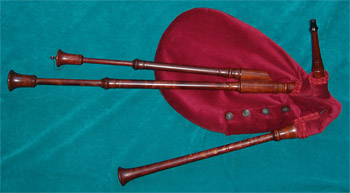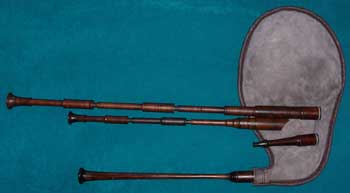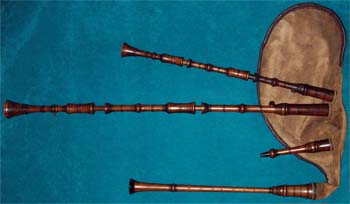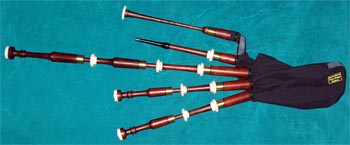|
Home Recorders Medieval Renaissance Early baroque Baroque Bagpipes Tabor pipes Whistles |
Bagpipes
|
"Dürer" |

|
Chanter in c' with a beating ( single ) reed; it works with recorder fingering in a compass of c'-d". Drones can be tuned c-g or d-a, therefore it is possible to play in two keys - C major and d minor. This bagpipe sounds not loud and it is easy to blow. Also available in d ' and g'. |
Schäferpfeife / �ornemuse de Berry |


|
The chanter of this bagpipe has a compass f'-c'', it works with the half-closed french fingering in g and semitones are possible. With the extra tuning hole in the drone it is possible to play in G major, g minor, a minor. One or two drones in G, g. Also available in a'. |
Great Highland Bagpipe |

|
|